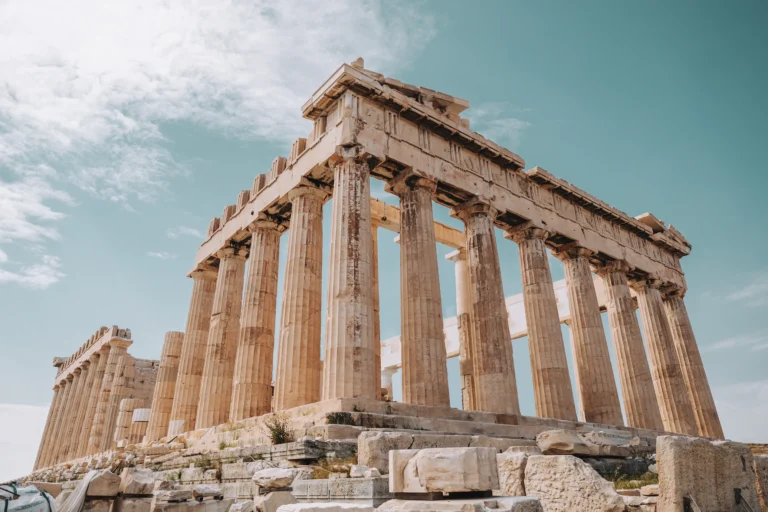If you’re a photography enthusiast, you must have come across the term ‘punctum’ at some point. I’ll be honest, I had been a photographer for many years before I heard the term and was intrigued to learn more.
In photography, punctum refers to an element, be it a detail or feature, that captures the viewer’s attention or stands out in a photograph. It is a crucial part of photographic composition that can help you convey a message or evoke emotions. In this blog post, we will explain what punctum in photography is, how it is used, and some frequently asked questions surrounding it.
Where Does the word Punctum come from?
Punctum is a term coined by Roland Barthes, the French literary theorist, in his book “Camera Lucida: Reflections on Photography.” In the context of photography, punctum refers to an element or feature that punctures the viewer’s attention and makes them feel something. It is the part of a photograph that evokes emotion or captures the viewer’s attention. A punctum can be anything from a facial expression to a detail in the background that draws the viewer’s eye.
How is Punctum used in photography?
As mentioned earlier, punctum is a crucial component of photographic composition. It is used to convey a message or evoke emotions in the viewer. Professional photographers use it to create stunning and captivating images that stand out from the crowd. A photograph with a strong punctum can make the viewer reflect on their own experiences and emotions. Punctum is what brings a photograph to life and makes it memorable.
Let’s look at how it is used in three different genres of photography;
Street Photography
In the realm of street photography, punctum takes on a unique role. This genre of photography is characterized by its candid, unmediated scenes of public life, where the punctum often emerges spontaneously. Street photographers use punctum to capture the extraordinary within the ordinary. It could be a fleeting expression on a passerby’s face, an unusual juxtaposition of colors, or a shadow cast in a peculiar manner. These elements puncture the banality of routine life and command the viewer’s attention, enhancing the narrative and emotional depth of the image. The punctum in street photography, thus, gives the viewer a glimpse into the subtle, often overlooked aspects of everyday life.
Landscape Photography
Punctum in landscape photography is used in a slightly different manner compared to street photography. In landscape photography, punctum often involves elements of nature that serve to puncture the viewer’s attention, creating an emotional resonance within the image. It could be a striking ray of sunlight breaking through the clouds, a solitary tree in a vast field, or even a peculiar rock formation. These elements of punctum help to break up the potentially monotonous aesthetic of a landscape, drawing the viewer’s eye and making the photograph more compelling. A well-executed punctum in landscape photography can imbue the image with a sense of awe, tranquility, or even melancholy, thereby amplifying the emotional impact of the photograph. It’s the punctum that turns a simple snapshot of a scenic view into a powerful visual narrative, encapsulating the spirit and essence of the landscape.
Wildlife Photography
In the realm of wildlife photography, the application of punctum takes on a unique dynamic. Punctum often resides in the captivating moments that nature spontaneously presents – it could be the piercing gaze of a predator, a bird in mid-flight capturing an insect, or the tender interaction between a mother animal and her offspring. These elements serve not only to grab the viewer’s attention but also to create an emotional bond with the creatures portrayed, reminding us of our shared existence on this planet. Punctum in wildlife photography thus serves to elevate a simple animal portrait into a poignant narrative of survival, connection, and coexistence, striking a chord with the viewer and leaving a lasting impression.
Punctum vs Studium
While both punctum and studium are integral components of a photograph, they serve distinct roles and elicit different responses from the viewer. Studium refers to the broader context, the elements in the photograph that portray the general scene or environment. This could include background details, compositional techniques, and the overall aesthetic of the image. It’s what initially draws the viewer towards the photograph and creates the premise for understanding the image. On the other hand, punctum is the element that punctuates the narrative, creating an emotional resonance. It’s the detail that stands out, stirs emotions, and leaves a lasting impression on the viewer. In essence, while studium provides the backdrop and sets the stage, punctum delivers the punchline, adding depth and emotional complexity to the image.
Frequently Asked Questions about Punctum
Can punctum be intentional or unintentional?
Punctum can be either intentional or unintentional. A photographer may capture something intentionally or stumble upon something inadvertently that becomes the punctum.
Can a photograph have multiple punctums?
Yes, a photograph can have multiple punctums. However, it should be done in a way that doesn’t make the image busy or confusing.
Final Thoughts
In conclusion, punctum is an essential part of photographic composition that makes an image stand out. It is the detail or element that captivates the viewer and evokes emotions. By understanding and using punctum effectively, photographers can create stunning and memorable images that convey a message or tell a story. Whether you’re an amateur or a professional photographer, mastering the use of punctum can improve your images significantly.





